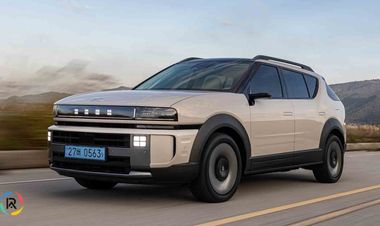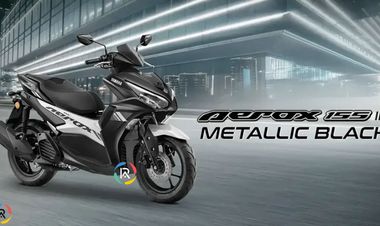Daimler Truck hosts its Capital market Day
The company hosts marking Daimler's first full year as an independent listed company.
721 views | Date: July 12, 2023
Boston,USA- Daimler Truck Holding AG., hosts its Capital Market Day 2023 in Boston after its first full year as an independent listed company. The main topics were the guidance increase for 2023, the confirmation of 2025 ambitions, an enhanced capital allocation policy, and the path towards 2030, transforming the Company for sustainable growth.
Martin Daum, Chairman of the Board of Management of Daimler Truck said, "Daimler Truck is doing very well. We are increasing our guidance for 2023. We are firmly on track to deliver on our 2025 ambitions. And we are ready to take Daimler Truck to the next level by 2030 – aiming for above 12% adjusted return on sales for the Industrial Business in sunny conditions. We are initiating a share buyback program of up to two billion euros over a period of up to two years to make sure our shareholders fully benefit from our successful development. Our flexible technology strategy enables us not only to navigate the historic transformation of our industry, but to capture all opportunities associated with it. In short: Daimler Truck is transforming for sustainable growth – to the benefit of our employees, our customers and our shareholders.”
Strong momentum and increase of guidance for 2023 to 8.5-10% adjusted ROS
After a strong first quarter in 2023 and an increase in unit sales in Q2, Daimler Truck continues to see a positive momentum for the remaining financial year. In the second quarter of 2023, worldwide unit sales of the Group increased by 9.0% versus the prior year quarter, selling in total 131,888 units (Q2/22: 120,961). All segments contributed positively to this year-over-year increase: Trucks North America +14.7% with 50,618 units (Q2/22: 44,124), Mercedes-Benz +1.1% with 39,236 units (Q2/22: 38,812), Trucks Asia +9.2% with 40,097 units (Q2/22: 36,704) and Daimler Buses +21.8% with 6,181 units (Q2/22: 5,075).
These developments result in an increased Group revenue guidance between €56 billion and €58 billion (previously: €55 billion – €57 billion).
The adjusted ROS guidance for the Industrial Business for the financial year 2023 increases to a range of 8.5-10% (previously: 7.5-9%). The Group also raises its outlook for each industrial segment. The adjusted ROS guidance for Trucks North America is lifted to the range of 11-13% (previously: 10-12%). For Mercedes-Benz, the Group now expects an adjusted ROS between 8-10% (previously: 7-9%). Trucks Asia is now expected to reach an adjusted ROS between 4-6% (previously: 3-5%). For Daimler Buses the adjusted ROS target corridor is raised to between 3-5% (previously: 2-4%). The main drivers are stronger core markets accompanied by an improving supply chain situation, robust pricing and a strong development of the services business.
The guidance for the Group’s investment and R&D costs is lifted to “slight increase” (previously “on prior-year level”), however, free cash flow for the Industrial Business is now expected to “increase significantly” (previously: “slight increase”), proving again Daimler Truck’s high cash conversion.
On track to deliver on 2025 ambition of above 10% adjusted ROS
Next to a positive start into the financial year 2023, the Group continues to stay focused on self-help measures, notably the reduction of fixed costs and capital spent as well as the increase of service revenues. By this, Daimler Truck has already improved its resilience and aims to further reduce the impact of cyclical downturns on future results. Overall, Daimler Truck is on track to achieve the above 10% adjusted return on sales ambition by 2025 for the Industrial Business in favorable conditions.
Given the excellent operating business development and strong cash flow generation, Daimler Truck also updated its capital allocation policy to reduce the impact of industrial cycles on dividend payments. To maintain a more stable dividend level even in tougher market environments, the future dividend payout range will amount to 40-60%. In addition, Daimler Truck announced to initiate a share buyback program with a value of up to €2 billion over approximately up to 24 months, expected to start after the Q2 disclosure (August 1st).
Leverage financial strength for 2030 ambition of above 12% adjusted ROS
“Looking beyond 2025, we see multiple growth opportunities in our industry and we are fully equipped to exploit these opportunities. This should translate into a 40-60% increase in revenues between 2025 and 2030 and an above 12% adjusted return on sales for the Industrial Business in sunny conditions. At the same time, we will be relentlessly focused on cost discipline and smart capital allocation,” says Jochen Goetz, Member of the Board of Management and CFO of Daimler Truck.
The main drivers for leveraging Daimler Truck’s financial strength towards 2030 are stringent allocation of capital through our return on capital steering model and the associated active portfolio management, service revenue growth, autonomous driving and zero emission vehicles (ZEV).
Active portfolio management and the stronger focus on return on capital steering approach support Daimler Truck to pivot towards the high-margin heavy-duty segment. The recently announced Memorandum of Understanding (MoU) of the intended merger of Mitsubishi Fuso Truck & Bus Corporation (FUSO) and Hino Motors is a prime example of the active portfolio management strategy. Service revenue growth is expected to be driven by parts & services, ZEV ecosystems and digital solutions. Daimler Truck will also make use of the expected highly scalable and highly profitable market opportunity of autonomous driving, expecting to generate over €3 billion revenues and over €1 billion of EBIT with autonomous driving in 2030. ZEV products are expected to have a higher revenue per unit and to be still favorable from a total cost of ownership perspective for customers. That is obviously highly dependent on energy prices and varies from segment to segment and region to region.
Fundamental to Daimler Truck’s financial ambitions is a technology strategy that focuses on highly differentiating products and scalable technologies which are developed once and deployed multiple times.
Technology Strategy: Creating value for customers and scale for Daimler Truck
Daimler Truck sets itself the clear ambition to lead the transformation towards sustainable transportation. Therefore, the company’s focus lies on two technology fields that provide the highest differentiation for customers and the largest economies of scale. Power to drive, comprising the propulsion system, and intelligence to drive, focusing on electronics and software.
For power to drive, Daimler Truck aims to continuously offer best total cost of ownership for its customers regardless of the energy source, be it diesel, battery or hydrogen. For intelligence to drive, Daimler Truck aims to differentiate with software features, which are rolled out rapidly, with high quality and tailor-made for customer use cases. Both technology fields are designed as global platforms with the goal of maximum commonality to scale them across the company’s portfolio – across all brands and regions. The platforms also allow to leverage on scales even beyond Daimler Truck.
Andreas Gorbach, Member of the Board of Management of Daimler Truck, responsible for Truck Technology says, “Technology plays a key role at Daimler Truck, as it is a crucial lever to increase shareholder value by creating both value for our customers and scale for us. This has always been essential, and even more so in times of transformation.”
Decarbonizing with battery and hydrogen based solutions
The speed of decarbonization in trucking is highly driven by the availability of infrastructure and competitive cost of green energy. Thus, the transformation requires a transition phase in which the diesel engine still plays a central role. In the case of medium-duty engines, Daimler Truck is concentrating on a non-captive procurement approach of such units in view of the declining volume of diesel-powered vehicles. Though in the case of the own platform for heavy-duty engines, the Group wants to remain competitive through further scaling, even beyond Daimler Truck.
For a zero-emission future, the company is convinced that only the combination of battery-electric and hydrogen-powered propulsion systems will enable the customers to solve their transportation tasks sustainably and economically.
When it comes to battery technology, Daimler Truck is using a fast-to-market approach and already has a broad vehicle offering, followed by a dedicated, purpose-built truck platform for high-volume production as battery-electric vehicle (BEV) penetration increases. For hydrogen, Daimler Truck is aiming to enter series production of first fuel cell powered vehicles within the second half of this decade, powered by the aggregates from cellcentric, its joint venture with the Volvo Group. As a potential complementary low-carbon technology for specific customer use cases with e.g. high power demand, Daimler Truck is considering the hydrogen combustion engine. If the corresponding regulatory framework conditions are set, the Company can build upon existing diesel engine platforms and provide this technology quickly.
Differentiation through digitalization
Starting already in 2024, Daimler Truck plans to roll out numerous next level software features such as further improved active safety functionalities, next level connectivity for fleet owner data access, predictive maintenance, and advanced over-the-air-updates. All these features are enabled by a more powerful computer architecture. In a next step, Daimler Truck targets to further decouple software and hardware development cycles, enabling product and business improvements that can be developed in fast agile cycles, by Daimler Truck or third parties, and deployed over-the-air.
Daimler Truck’s technology-openness enables to create value for all customer use cases. Stringent commonality, portfolio optimization and partnerships create the scale for profitability.
Leave a Response
You must be logged in to respond.
Responses
No responses yet. Be the first!






